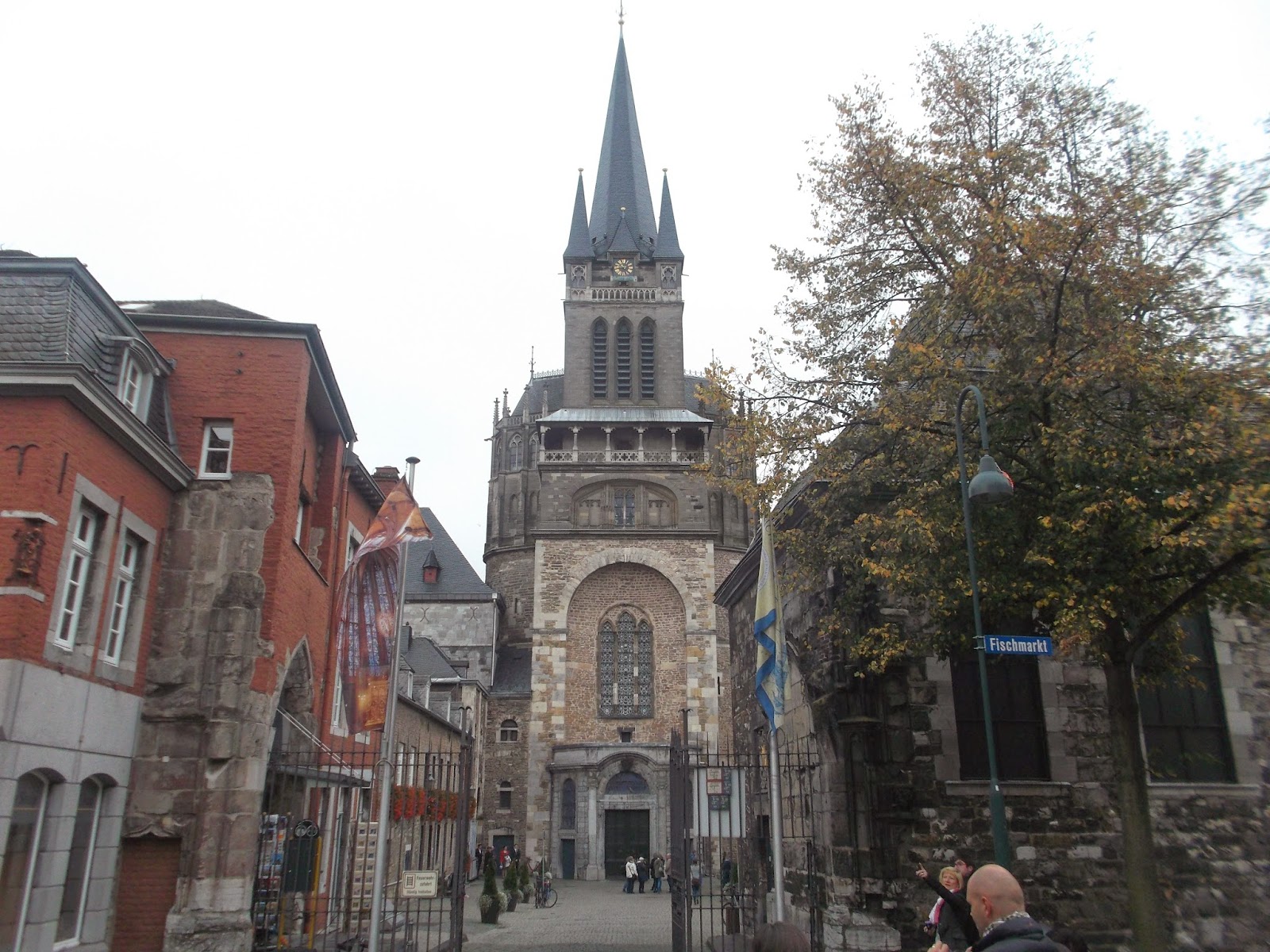It is quite probable that you have never heard about Monschau. I mean, many people who live in Liège, which is the neighboring province in Belgium, don't know that this town exist. Monschau is a small village (less than 15,000 inhabitants), next to the Belgium-German border in an area called Eifel. If you don't own a car, it is very difficult to reach this village; you need a bus/train combination that is risky. However, Monschau has one of the most charming Christmas markets in Germany that is totally worth the effort.
In my opinion, the best time to visit Monschau is obviously during Christmas. Nevertheless, the town has a castle (on a mountain), that apparently offers concerts of classical music in summer. There are a few attractions in the city. The main one is the Red House, which was a mansion that belonged to a rich merchant and it was built in the eighteen century. It is the most impressive building in the town; you can see how was the life of the wealthy people more than two centuries ago It has all the original furniture. Unfortunately you could only visit it between April and November. The best moment to visit Monschau is the last weekend of November when you can enjoy the Christmas market and visit the Red House.
In addition to the Red house, there are several nice but small churches that are good to visit. The most interesting one is the protestant church that is connected by a small bridge. It is very small but I will say, it has a very warm feeling. In my opinion, the timber houses is what makes Monschau special. Monschau was spared for the destruction that took place during the World War II. I recommend to take some time to wonder and see the beauty of the town.
If you go for the Christmas market, there are several things that you should keep in mind. The markets are spread all around the town, You can find stands even inside some buildings. In addition to the traditional Christmas ornaments, you could find gourmet food and other specialty goods. The best souvenirs are Monschau Mustard (several varieties, the most delicious are the one with honey and poppy-seeds or the one with Riesling), bread (go to Hensch, people go there to buy bread made in stone oven), Printen, Elder-flower syrop (homemade) and several kinds of pastries with apple. Try the mulled wine, the chocolate with alcohol, the kartoffelpuffer mit apfelmus (pankakes made of potatoes with apple sauce), champignons, and a large diversity of sausages.
If you do not own a car and your departure point is Belgium I will explain you how to get there. This only works on weekends and it is risky. If there is a delay in the train you might have to take a cab. Take a train to Eupen (you should arrive at least 5 minutes before 10 a.m.). In front of the train station there is street with a bus stop. The stop is in the same street but not exactly in front of the train station, you can see it from the window of the train if you are seated in the first wagons. You need to take the 385 towards Monschau. To go back, you need to take the same bus. The last departure is at 15:33. If you miss that bus, you can always go to Aachen and take the train there to Belgium (if you departure point is Belgium). However, I think the last bus to Aachen is at 19:25 (check Deutsche Bahn for details). It would be safer to go by car o with an organized excursion. Since I do not own a car, I took the risk every year, without problem.
If you go for the Christmas market, there are several things that you should keep in mind. The markets are spread all around the town, You can find stands even inside some buildings. In addition to the traditional Christmas ornaments, you could find gourmet food and other specialty goods. The best souvenirs are Monschau Mustard (several varieties, the most delicious are the one with honey and poppy-seeds or the one with Riesling), bread (go to Hensch, people go there to buy bread made in stone oven), Printen, Elder-flower syrop (homemade) and several kinds of pastries with apple. Try the mulled wine, the chocolate with alcohol, the kartoffelpuffer mit apfelmus (pankakes made of potatoes with apple sauce), champignons, and a large diversity of sausages.
If you do not own a car and your departure point is Belgium I will explain you how to get there. This only works on weekends and it is risky. If there is a delay in the train you might have to take a cab. Take a train to Eupen (you should arrive at least 5 minutes before 10 a.m.). In front of the train station there is street with a bus stop. The stop is in the same street but not exactly in front of the train station, you can see it from the window of the train if you are seated in the first wagons. You need to take the 385 towards Monschau. To go back, you need to take the same bus. The last departure is at 15:33. If you miss that bus, you can always go to Aachen and take the train there to Belgium (if you departure point is Belgium). However, I think the last bus to Aachen is at 19:25 (check Deutsche Bahn for details). It would be safer to go by car o with an organized excursion. Since I do not own a car, I took the risk every year, without problem.














































